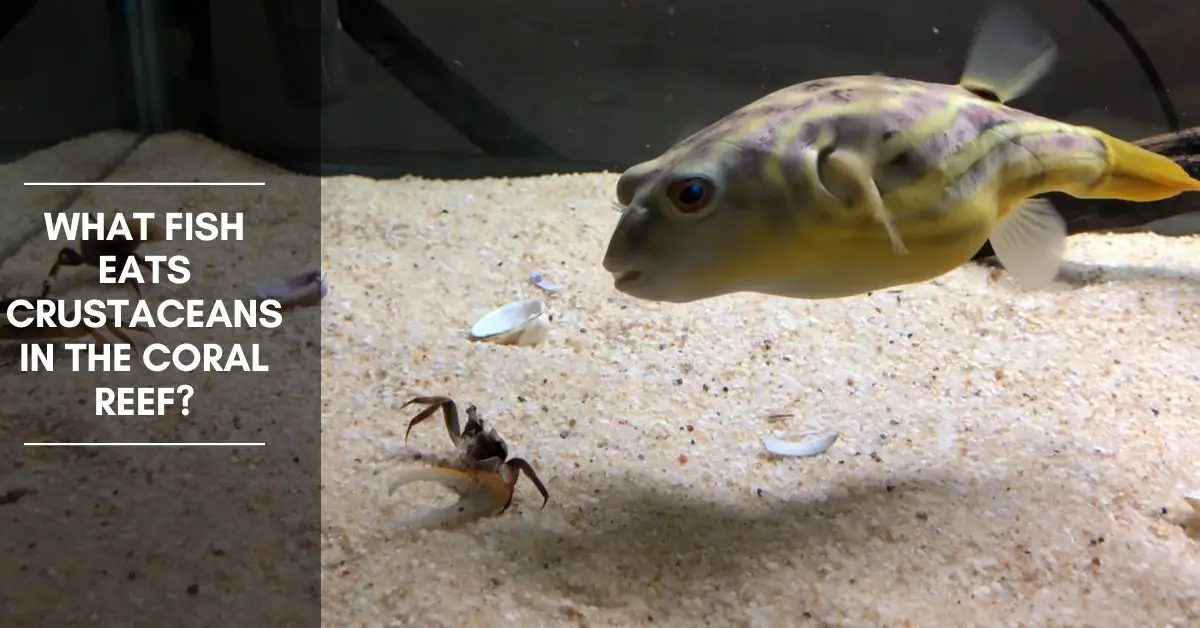Coral reefs teem with invertebrates – a vital food resource for plenty Of different fish. However, prey invertebrates have an impressive array of defenses.
Perhaps the most common is a tough shell, or carapace, to protect their vulnerable bodies, as seen in crabs, shrimps, urchins, clams, and snails. Finding these animals does not often present much of a problem, but any fish that wants to gain access to a juicy meal must first work out how to get past the hard shell.
What kinds of fish eat these invertebrates?
Plenty of fish, ranging from moray eels and groupers to wrasses and from triggerfish to puffer-fish, are equipped to a greater or lesser extent to tackle hard-shelled prey. Crustaceans, such as hermit crabs, shrimps, and amphipods, are especially important prey for reef fishes. Mollusks, too, form a major part of fishes’ diets in the wild, especially for fish such as goatfish that forage for prey buried in the sandy substrate around reefs.
How do they get through the shell?
There are two main ways of getting at the tasty flesh of a shelled animal. One is to bite through the carapace, as pufferfish do. The other is for a fish to crush the prey inside its mouth, using powerful pharyngeal teeth set in the throat.
API STRESS ZYME Freshwater and Saltwater Aquarium Cleaning Solution 16-Ounce Bottle
API ACCU-CLEAR Freshwater Aquarium Water Clarifier 4-Ounce Bottle
30% OffTetra Water Clarifier, Aquarium Treatment Solution, 8.45 oz, Clears Cloudy Aquarium Water, Safe to Use with Fish and Plants, For Fresh Water
$8.49 (as of June 28, 2025 06:09 GMT +03:00 - More infoProduct prices and availability are accurate as of the date/time indicated and are subject to change. Any price and availability information displayed on [relevant Amazon Site(s), as applicable] at the time of purchase will apply to the purchase of this product.)This is the method used by wrasses. Biting is especially useful for tackling prey too large to fit in the mouth. Puffers and porcupinefish have teeth which, like those of parrotfish, are fused into a beak.
Iron deposits in the teeth themselves add strength to their impressive bite. Crushers select prey that they can first get into their mouth, so that the pharyngeal teeth can be brought to bear In both groups, the jaws are powered by extremely strong muscles; those of the red-breasted Maori wrasse are about 500 times stronger than those of fish that graze on soft foods, allowing the fish to crunch just about any prey.
As well as these impressive crushing teeth, many wrasses have spiky teeth protruding beyond their jaws with which they force their prey from holdfasts.
What other strategies do fish have for dealing with well-defended prey?
Crabs are well defended, not only by their tough exoskeleton but also by their claws. Tackling such feisty prey requires a strategy, especially when prey and predator are fairly well matched in size.
Young queen triggerfish have two methods of attacking crabs: the first exploits the fact that the crab is inflexible and cannot defend all parts of its body, so if the crab is caught in the open, the trigger can bite at its hind legs or towards the back of its carapace.
The trigger can also blow jets of water to unbalance the crab, once it is on its back, the crab is beaten. Triggerfish, among the most intelligent of all fish – also have strategies for dealing with the spines of sea urchins.
Again, they may use jets of water to upend the urchins, but some populations are known to carry the urchin to the top of the water column where it is released, allowing the fish to bite at the softer underparts as the urchin drifts towards the bottom.

Hi, my name is Sean, and I’m the primary writer on the site. I’m blogging mostly about freshwater and saltwater aquariums, fish, invertebrates, and plants. I’m experienced in the fishkeeping hobby for many years. Over the years I have kept many tanks, and have recently begun getting more serious in wanting to become a professional aquarist. All my knowledge comes from experience and reading forums and a lot of informative sites. In pursuit of becoming a professional, I also want to inspire as many people as I can to pick up this hobby and keep the public interest growing.
Read more about Sean.
Please join also my Facebook group.





















2 thoughts on “What Fish Eats Crustaceans in the Coral Reef?”
Comments are closed.